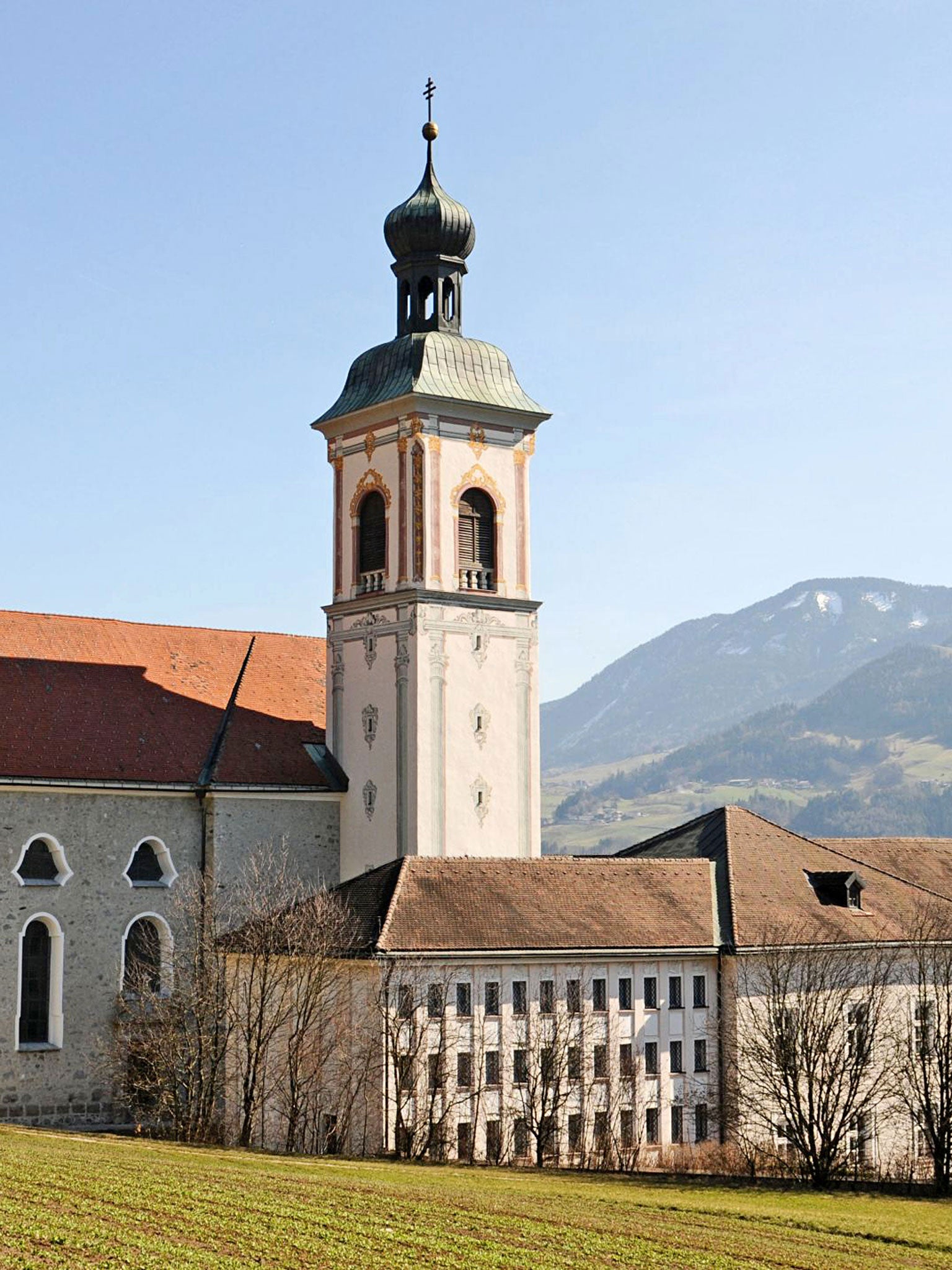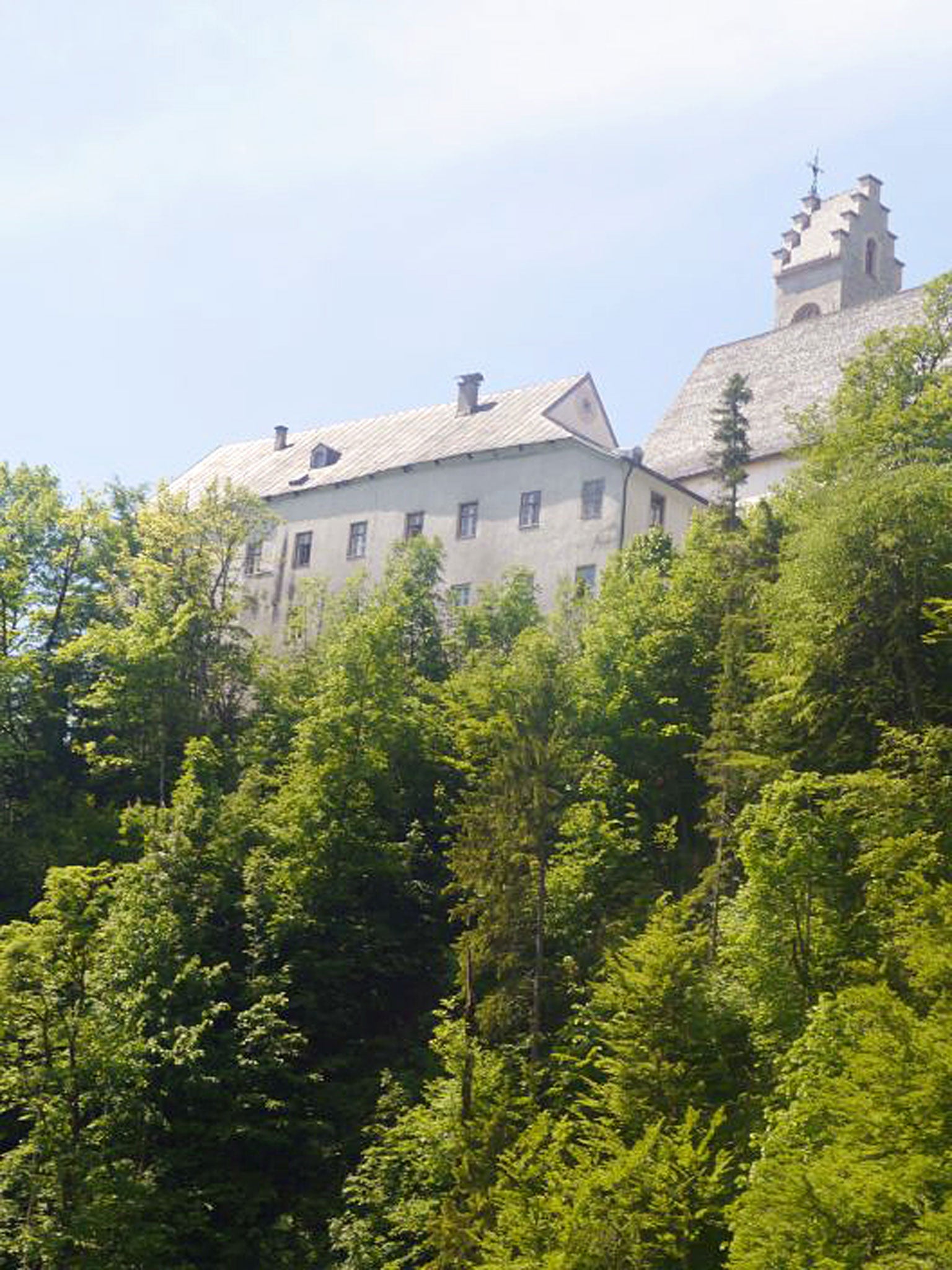Inner peace is all part of the package in Austria
In a brave experiment, the Catholic monks of St Georgenberg-Fiecht are welcoming British tourists to their monastery in the Tyrol. 'Tepid Christian' William Cook was entranced

Last summer, in a lush green valley surrounded by snow-capped mountains, an ancient monastery threw open its old oak doors. The Catholic monks of St Georgenberg-Fiecht have long welcomed individual travellers, but in 2013 they went into partnership with a major tour operator for the first time. Now British tourists can book a package with Inghams at St Georgenberg-Fiecht, a Benedictine monastery in the heart of the Austrian Tyrol.
So why stay in a monastery? Is it only suitable for true believers? Or can you treat it like a normal holiday? As a vague and inconsistent Anglican, I thought I might make a good guinea pig. With my lax religious record – bog-standard C of E, with several lengthy lapses – I decided that I could assess its merits from a (tepid) Christian perspective and also a secular point of view.
Arriving at the monastery, half an hour's drive from Innsbruck airport, it's immediately apparent that this is no ordinary package holiday hotel. Built in 1705, it's a handsome and imposing building with the robust dimensions of a castle. Framed by woods and meadows, the setting is tranquil and attractive, but it isn't the isolated hideaway I'd expected. For me, that's a nice surprise. St Georgenberg-Fiecht is built for quiet contemplation, but there's a lively little tavern next door and a busy road below. With the village of Fiecht on one side and the market town of Schwaz on the other, this is a place apart, but it still feels connected to the outside world.

An elderly monk in a black cassock meets me at the door. This is the Prior, Pater Arno, who looks after all the visitors. He's small and stooped, but his face is fresh and youthful. He greets me with a boyish grin and his eyes are full of laughter. I warm to him straight away. He directs me up a wide stone staircase to my bedroom, on a long corridor lined with antique paintings. There's no one else about, but it doesn't feel at all spooky. Sunlight streams through the windows. The ambience is light and airy. The decor is simple yet elegant. It reminds me of a posh boarding school.
Downstairs, in the refectory, Father Arno joins me for supper: soup and lasagne, and to drink, the sharp cider which the monks make themselves. It's more Spartan than most hotel food but it's just as nourishing. Despite the schoolroom decor, it feels like eating in someone's home. Over dinner, Father Arno tells me a bit about himself. He's 74. He's lived here since he was 20. If he had his time again, he says, he'd do it all again.
"We have a lot of freedom here – inner freedom," he explains. This isn't a closed order (he's travelled widely with his work, throughout Austria and overseas) but he's totally committed to this one monastery, and the dozen monks who live here – though there were twice as many when he first arrived. "You have to love each other even if you don't always feel love. It's like a marriage." The Abbot is the boss. No one leaves without his say-so. Chances are, Arno will be here until he dies. It's not a silent order, but conversation is seen as precious, as is everything. "All the objects in the monastery are holy objects. If you take a pencil and write a letter, you are performing a holy act."
Next morning, I'm in the ornate little chapel at 6am for the first service of the day (there are at least four services every weekday – more on Sundays and Feast Days). I'm not usually up this early, but I'm not remotely bleary eyed. Without the TV to distract me, I had nodded off nice and early the night before and today I feel full of beans.
The monks' melodic singing is hypnotic, but my schoolboy German isn't really up to following the words, and it's 10 minutes before I realise I've got the wrong hymn book. Without any prompting, the Abbot goes and fetches me the right one. I'm touched by his kind humility. He's the head honcho, but he's not too grand to make sure his guests feel at home.
Father Arno is perfectly happy for Anglicans to participate in these Catholic services, but it's not something he expects of me, or any other visitor to St Georgenberg-Fiecht. "If somebody just comes for a holiday that's OK, but we like it if they intend to grow," he tells me. "Our guests are not just tourists. We don't want to be a hotel." However, there are no hard-and-fast rules. The monks' time is divided between worship, study, work and recreation (in the corridor I see photos of monks playing table tennis and volleyball) but you're free to join in with as much or as little as you please. Father Arno gives spiritual counselling and leads classes in meditation and relaxation, but it's all entirely optional. All he asks for, if you choose to attend, is a donation of €3.
Over breakfast, Father Arno fills me in on the origins of St Georgenberg. The original monastery was built in 1138, in the mountains high above us. Monks lived up there for more than 550 years, until a series of fires forced them down into the valley, where they built this "new" monastery, St Georgenberg-Fiecht. One monk still lives in the old monastery, which now doubles as a hotel and restaurant. A winding footpath leads from the new monastery up to the old one, marked with the Stations of the Cross. After breakfast, I set off. "Walking is one of the best forms of meditating," says Father Arno, as he sees me off.

It's a 90-minute uphill hike, but the view is well worth the effort. (As Father Arno says: "Without suffering you can't have happiness.") The medieval monastery is perched above a precipice, beside a beautiful Baroque church. The panorama from the summit is sublime. "Thank you for this lovely holiday," a child has written in the prayer book. "I hope I will remember it forever." A trestle table outside the folksy Gasthaus is the best place to drink in the view. After a hearty lunch of venison and red cabbage, and a cold beer, I amble back down the way I came until I reach a little bridge where another path veers off down a dramatic gorge called the Wolfsklamm. A steep staircase follows the ferocious torrent down 354 wooden steps to a quaint little town called Stans, where you can cool off in the Freibad (public swimming pool) or the chic spa in the Hotel Schwarzbrunn next door.
There are loads of other scenic hikes, direct from the monastery. The fairytale castle, Schloss Tratzberg, is only a couple of hours away. Train-spotters adore the Achensee Steam Railway, the world's oldest cog wheel locomotive, which wheezes up the hillside to Achensee, the Alpine lake which belonged to St Georgenberg until the end of the First World War. Pleasure boats criss-cross the water, shuttling sightseers across the lake. If you're feeling really fit, you can walk here from the monastery, although you should probably set aside half a day. The most exciting expedition is to the Schwazer Silberbergwerk, the silver mine on the outskirts of Schwaz, the biggest in medieval Europe, and still active until the end of the last century. A little locomotive carries you deep into the mountain, where an old miner takes you on a walking tour through a maze of ancient tunnels, more than a kilometre underground.
On my last morning, the Abbot, Father Anselm, joins me at breakfast to say goodbye. I ask him about his monastery's partnership with Inghams. Should the people who come and stay here be Christians? "They should be open to new ideas," he says. "It's an experiment. It's a spiritual project. And we will do our best." As always, the outcome is a mystery. "We're distributing ideas – spirituality, the Gospel – but we don't see the proof. A banker may see it in the accounts, but we can't control the outcome."
He's quite right, of course. This brave experiment is completely unpredictable, but if the first few visitors are anything to go by, I think it could become a big success. "Thank you for sharing your wonderful monastery with us," reads an entry in the visitors' book, from one of the first British couples to come here. "It has been an experience that will remain with us for the rest of our lives."
Getting there
Four nights' half-board at St Georgenberg-Fiecht monastery costs from £529pp with Inghams (01483 791 114; inghams.co.uk) including flights from Gatwick to Innsbruck and transfers.
Inghams has also introduced an Italian monastery for summer 2014. The Neustift Monastery sits near Brixen in South Tyrol. Four nights half-board at the Neustift Monastery cost from £589pp including flights from Gatwick to Innsbruck and transfers.
More information
Join our commenting forum
Join thought-provoking conversations, follow other Independent readers and see their replies
Comments
Bookmark popover
Removed from bookmarks